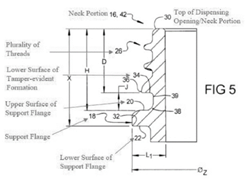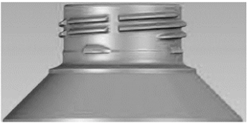The US Court of Appeals for the Federal Circuit affirmed the Patent Trial & Appeal Board’s (Board) interference decision finding that priority belonged to the junior party based on sufficiently corroborated reduction to practice. Dionex Softron GmbH v. Agilent Technologies Inc., Case No. 21-2372 (Fed. Cir. Jan. 6, 2023) (Reyna, Chen, Stark, JJ.)
Both parties attempted to instigate an interference by copying each other’s claims regarding a method of operating a liquid chromatography system. Agilent first substantially copied Dionex’s claims but failed to secure declaration of an interference and subsequently amended its claims. Dionex then copied verbatim Agilent’s amended claims, successfully provoking an interference. The Board identified Dionex as the senior party and Agilent as the junior, placing the burden for priority on Agilent.
At the interference, Dionex moved for judgment based on lack of written description for the relevant count language (emphasis added):
. . . determining a movement amount of the piston within the chamber from a first position to a second position to increase a pressure in the sample loop from an essentially atmospheric pressure to the pump pressure, based on the pump pressure […] wherein decreasing the volume includes forwarding the piston within the chamber by the determined movement amount from the first position to the second position.
Dionex contended that Agilent’s specification lacked written description for “determining a movement amount” and subsequently “forwarding the piston,” wherein the order of those two separate operations was important and lacking support. Dionex also contended that while the relevant specification was Dionex’s patent for a majority of count terms, some terms, such as “determining,” should be viewed in light of Agilent’s application. The Board disagreed and found that Agilent’s specification was controlling and contained adequate written description to support the count.
In finding Agilent’s written description adequate, the Board rejected Dionex’s contention that the claims required a determination of movement amount before forwarding the piston. Applying the broadest reasonable interpretation standard, the Board found that the count language permitted determination of movement amount while forwarding the piston and that consequently there was adequate support in the specification.
Both parties moved for judgment on priority. The Board granted Agilent’s motion, finding that even as the junior party, Agilent proved conception and reduction to practice before Dionex’s earliest conception date. Applying the rule of reason, the Board found that the testimony of one of Agilent’s co-inventors was sufficiently corroborated by two coworkers to show successful reduction to practice by the critical date. The Board also credited Agilent’s coworker testimony in denying Dionex’s contention that Agilent’s reduction to practice lacked a pressure senor and credited testimony stating that a high-pressure pump with a built-in pressure system was used. The Board also declined Dionex’s request to draw a negative inference from the lack of testimony of the other co-inventor, crediting Agilent’s explanation that the testimony would have been cumulative. Dionex appealed.
On appeal, the Federal Circuit found that the Board had correctly treated Agilent’s specification as the “originating specification” because it was Dionex’s [...]
Continue Reading
read more

 Subscribe
Subscribe




